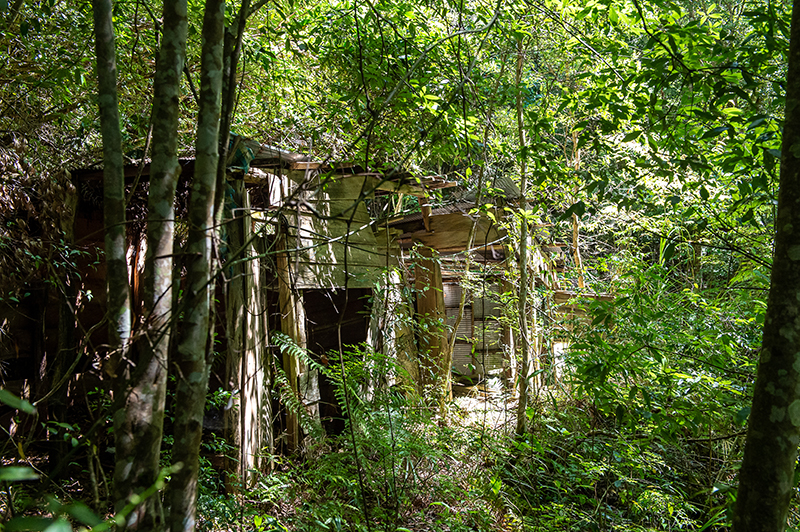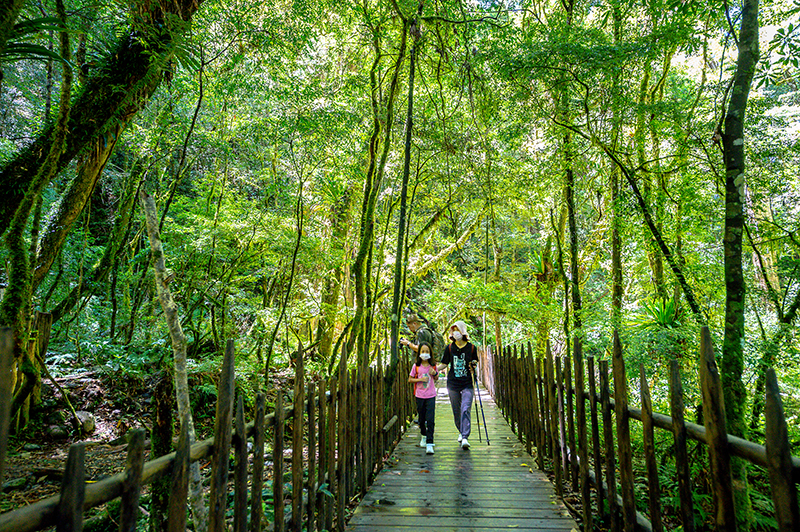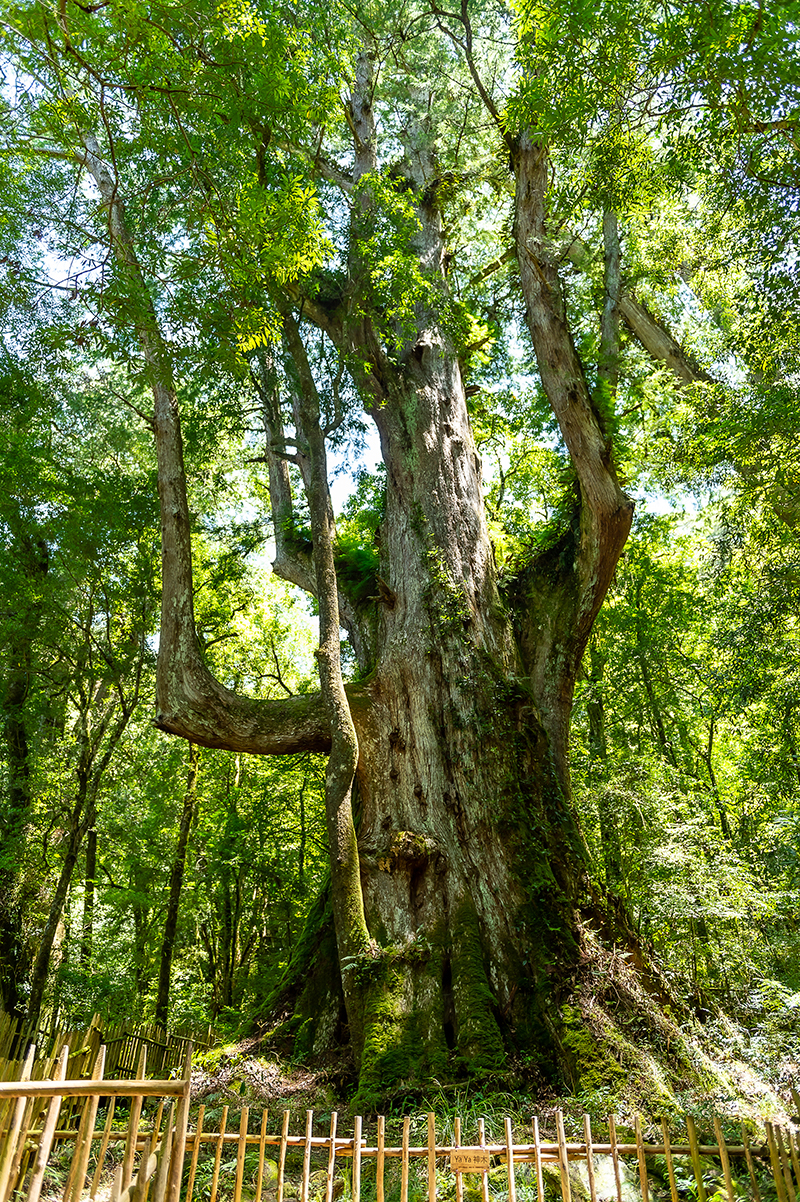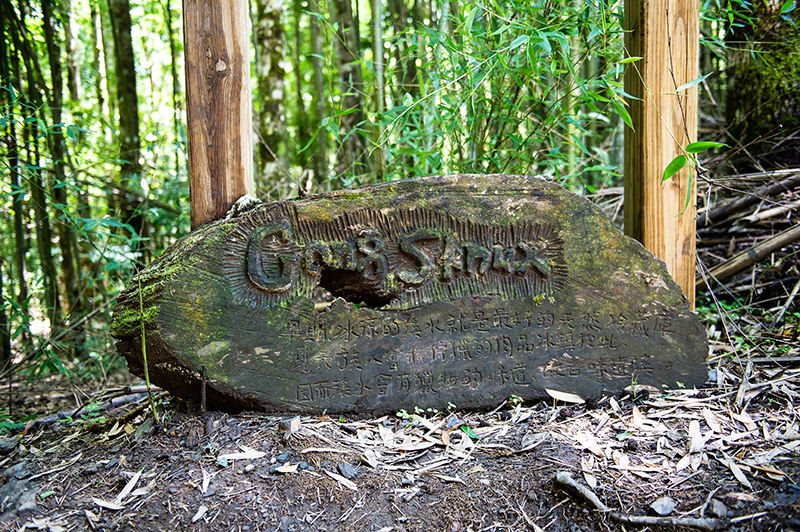Smangus is famous for its giant trees*, but how were they discovered? What does the scenery along the way have to do with the migration history and economy of the Atayal people? Walking on the traditional territory of the community, let's take a look at everything that makes Smangus!
*"Sacred trees" is the term used by outsiders; local indigenous people call them "giant trees".

Looking out from the sloped gravel path, this entire area is the traditional territory of the indigenous community, and this land is guarded by the local Atayal people. The Rgyax Sangan mountain up ahead is roughly 1,500 meters, some of the gentle slopes used to be inhabited by the Atayal people, and this is where our ancestors fought the Japanese army.

Following the Tqzing Creek below, the river source can be traced back to the Dabajian Mountain, and along the creek to Smangus was the migration route of the Atayal, where they first settled before slowly spreading further downwards. This is why people from the front range (Jianshi and Naluo) might say, "I'm from Smangus." Tqzing is also the upstream of Dahan River, hence, protecting the ecology in our community means protecting the Shimen Reservoir.

Usually, if you see gentle slopes that are especially "clean" with little weed along the trail, it means people are out here often. When our people go down into the valley or travel to the mountain on the opposite side, they first gather to pray and prep their equipment and supply, hence the patches with less weed.


This plot was originally barren with few trees, so our people planted Japanese cedar here because it can be used as maintenance material for the trail.

Another large patch of Japanese cedar is lower down the Smangus Community. In the early days, every household grew peaches, but after discussion and resolution by the community, it was decided that the peaches should be grown on gentle slopes and places less likely to be affected by typhoons, so they decided to plant Japanese cedar there instead, which can also be used for future generations to build houses.


Tayux means "to rest", and Raga means "maple tree". This area was developed by the five assiduous brothers of Talah, Temu, Ahok, Miquy, and Yukan, and they each had respective expertise in agriculture, sports, music, and weaving. The people at Smangus Community are the offspring of Miquy.



Prior to peaches becoming the economic crop, the main economic crop at Smangus shiitake. Shiitake needs to be dried with heat after gathering, and there are two ways: one is to use the drying equipment sitting right in the workshed, or dry naturally by digging a ditch, placing a metal drum in the ditch, and piling timber inside the drum to dry shiitake in high temperature. The machines are all removed and all that is left now is the empty shed.

 I remember coming here with my mom and dad, carrying the shiitake spawn here from Smagus Community. We used to eat boar meat here, they say you'll grow up if you finish them.
I remember coming here with my mom and dad, carrying the shiitake spawn here from Smagus Community. We used to eat boar meat here, they say you'll grow up if you finish them.

During the shutdown due to COVID-19 in 2021, men in the community spent millions on timber and hulled them into the area of giant trees using trucks and manpower. With the trail built, it can protect the roots of the giant trees, and prevent tourists from trampling all over them.


YAYA means "giant", and this sacred tree is about 2,500 years old, measuring 45 meters tall. It grew so tall because it sits on the leeward slope close to the water source, a perfect environment for trees to grow tall and large.


Part of the giant trees trail coincides with our hunting trail, and in the past, our people would chill the game they caught in the naturally cold creek; therefore, the creek carries the scent of the games.






